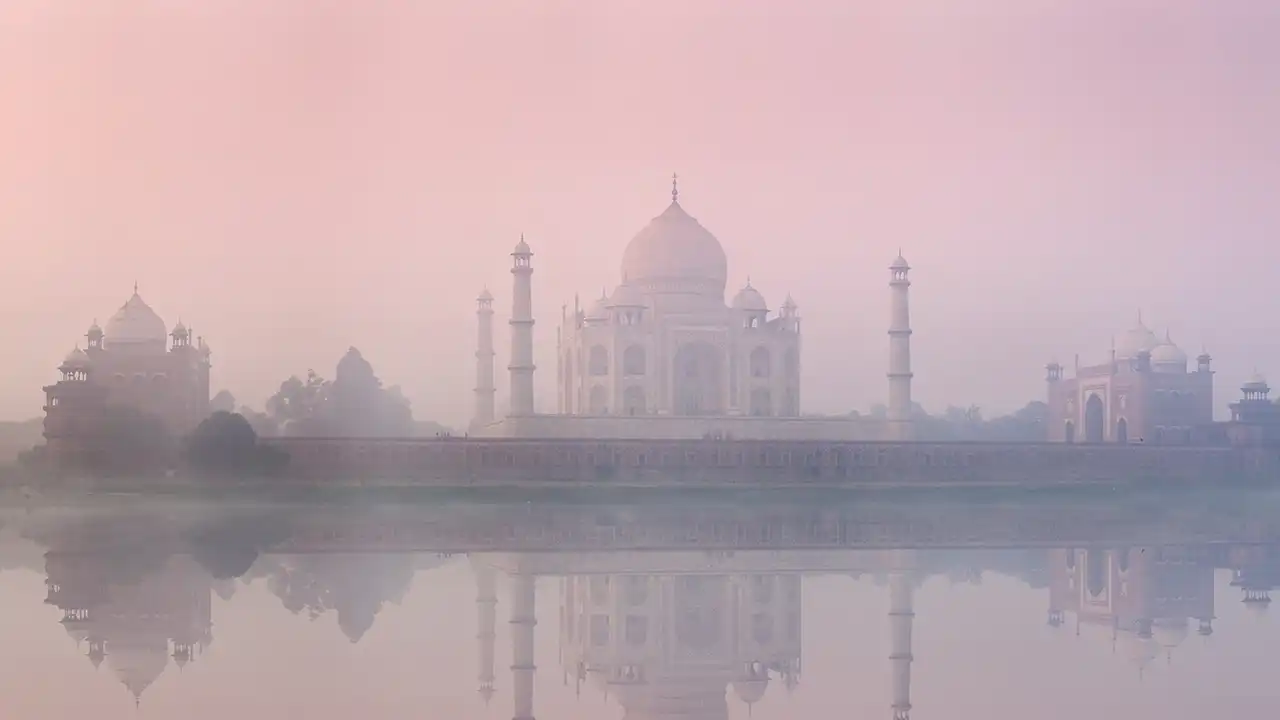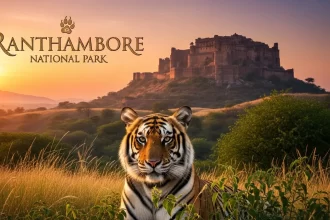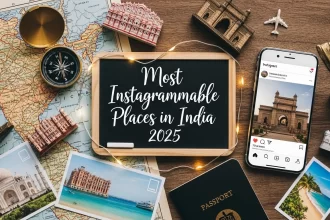India’s monsoon months, June to September, transform the country’s landscapes into green, vibrant vistas, and therefore it is the ideal time to explore its rich cultural heritage. India’s UNESCO Heritage Sites are the best blends of history, architecture, and nature, which receive an extra kick with the rains. Here is the top 10 list of UNESCO Heritage Sites to explore during Monsoon 2025, emphasizing their own special appeal and accessibility.
Why Visit UNESCO Heritage Sites of Monsoon
Monsoon brings a new flavor of freshness to India’s UNESCO Heritage Sites since the temperatures become more moderate and the crowds are thinner. The rain complements the lush greenery surrounding the sites, making them resemble canvas paintings. From temples to fortresses, the sites witness India’s history, and the monsoon infuses them with some magic.
1. Taj Mahal, Agra
The fabled Taj Mahal, a symbol of love, looks almost ethereal during the monsoon. The white marble glitters in rain-cleaned skies, and the gardens surrounding it are full of hues. It is less crowded as a UNESCO Heritage Site, with a leisurely visit. Remember to do the view from Mehtab Bagh over the Yamuna River.
2. Ajanta and Ellora Caves, Maharashtra
The UNESCO World Heritage Site Ajanta and Ellora Caves are a must-visit during monsoon. The surrounding hills turn green, enhancing the beauty of ancient rock-cut caves. Buddhist murals in Ajanta and intricate carvings in Ellora, like the Kailasa Temple, look beautiful under misty weather.
3. Hampi, Karnataka
UNESCO Heritage Site Hampi is an ethereal open-air museum of the ruins of Vijayanagara Empire. Monsoon strengthens the current of the Tungabhadra River, adding drama to the boulder field. Take a stroll around the Virupaksha Temple and Vittala Temple’s stone chariot in the cool rain.
4. Khajuraho Temples, Madhya Pradesh
The Khajuraho Temples, a world heritage site as recognized by UNESCO, are renowned for erotic sculptures with scenes and Nagara architecture. The rains during the monsoon season enhance the delicate carvings, and the greenery around creates a serene background. Visiting the Western Group of Temples is a must-see.
5. Red Fort, Delhi
Delhi’s Red Fort, a UNESCO Heritage Site, stands majestic during the monsoon. The red sandstone walls contrast beautifully with the green lawns, and the cooler weather makes exploring the fort’s museums and pavilions comfortable. Monsoon evenings here are particularly enchanting.
6. Qutub Minar, Delhi
Yet another Delhi treasure, the Qutub Minar, a UNESCO World Heritage Site, is a towering example of Indo-Islamic architecture. The rains during the monsoon season complement the gardens around the place, and the fine carvings on the minaret sparkle in rainy weather. The nearby Iron Pillar is an interesting addition.
7. Konark Sun Temple, Odisha
The UNESCO Heritage Site Konark Sun Temple is a stunning work of Kalinga architecture in chariot form. Monsoon clouds add a dramatic drama to the temple’s carved facades, and a side excursion of refreshment is offered by the adjacent Chandrabhaga Beach.
8. Jantar Mantar, Jaipur
Jaipur’s Jantar Mantar, a UNESCO World Heritage Site, is an astronomical observatory of intriguing instruments. Post-rain, clear skies of the monsoon are ideal to visit this open-air complex. Combine it with a trip to the nearby Amber Fort to make it a complete trip.
9. Mahabalipuram, Tamil Nadu
The UNESCO World Heritage Centre of Mahabalipuram, its shore temple and rock-cut sculptures, are breathtaking during the monsoon. Monsoon waves and rains lend drama to the mood of the Shore Temple and Arjuna’s Penance and are every photographer’s dream come true.
10. Sundarbans National Park, West Bengal
Sundarbans, a World Heritage Site under UNESCO, is a unique mangrove habitat with the habitat of the Royal Bengal Tiger. Monsoon fills the rivers, and boat safaris are a thrilling experience. The green canopy and wildlife make this place a favorite among nature lovers.
Tips for Travel to UNESCO World Heritage Sites in Monsoo
- Take Rain Gear: Umbrellas, raincoats, and water shoes are essentials.
- Verify Accessibility: Hampi, for instance, may have slippery roads, and therefore one must plan accordingly.
- Timing: Visit early morning to avoid heavy rain and enjoy cooler temperatures.
- Respect Conservation Rules: Do not touch old buildings to preserve these UNESCO Heritage Sites.
Why These Sites Matter
India’s UNESCO World Heritage Sites reflect the country’s diverse past, from Mughal grandeur to Buddhist art dating back centuries. Visiting during Monsoon 2025 offers a unique treat, with nature herself bringing splendor to them. While these sites attract tourists to India, they also protect the nation’s cultural heritage for posterity.
Plan Your Monsoon Adventure
Monsoon 2025 is the perfect time to explore India’s UNESCO Heritage Sites. From the surreal Taj Mahal to the wild Sundarbans, each site guarantees an experience with a twist of rain. Put on your raincoat, embrace the season, and embark on a journey to travel through India’s evergreen heritage.







